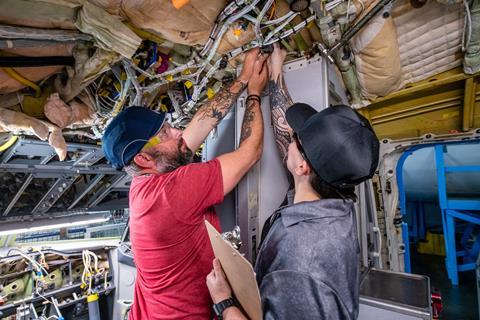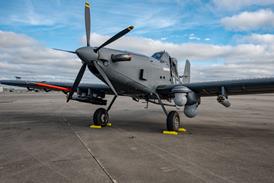Boeing aims this month to fully resume final assembly of commercial aircraft in the Pacific Northwest, having so far held off from rebooting the lines after machinists ended a 53-day-strike in early November.
In a recent internal email, Boeing says it is working through its “safety management system” (SMS) to ensure its operation, tools and people are prepared for a safe production restart. The company’s 737 production lines in Renton and its 767 and 777 lines in Everett have already been offline for nearly three months.
Meanwhile, the Federal Aviation Administration says it is closely monitoring Boeing, with FAA administrator Michael Whitaker having visited the company’s 737 Max assembly site in Renton last week.

“Commercial Airplanes is expected to resume final assembly of new airplanes this month in the Pacific Northwest. A dedicated team has been using the company’s safety management system (SMS) to ensure that tools, processes and teammates are ready to safely restart after the work stoppage,” says the Boeing internal email.
“Additionally, each airplane programme has invested time to complete unfinished jobs, clear excess inventory where possible, and address issues that could interrupt factory flow,” it adds.
The company has been delivering some aircraft amid the stoppage.
Boeing faces immense financial pressure to resume production as quickly as possible, but must also ensure its operation does not allow further quality lapses.
It halted assembly of 737s in Renton and of 767s and 777s in Everett on 13 September when members of the 33,000-strong International Association of Machinists went on strike. The strike lasted nearly eight weeks, putting Boeing under financial strain and prompting it to raise billions of dollars in new financing.
Boeing had never been expected to get its production lines humming smoothly immediately after the strike ended due to the enormous complexity of coordinating such a massive assembly and supply chain system.
But Boeing’s reboot has taken longer than some analysts suspected due to its ongoing safety review, the company says.
As part of that review, “a [Boeing Commercial Airplanes] production team used… a safety risk management assessment to examine the restart plan and identify potential hazards – anything that might compromise Boeing’s ability to deliver safe, compliant and conforming products and services”, says Boeing’s internal email.
The team “evaluated, calibrated or certified about 25,000 tools”, it says. Boeing is also taking steps to ensure employees, having been off the job for weeks while on strike, complete mandatory training and are “reoriented to their roles”.

On 3 December, FAA administrator Whitaker visited the Renton site and met with Boeing chief executive Kelly Ortberg.
“What’s truly needed is a fundamental cultural shift that’s oriented around safety, quality improvement and effective employee engagement and training,” Whitaker said of Boeing following that visit. “As expected, Boeing has made progress executing its comprehensive plan in these areas, and we will continue to closely monitor the results as they begin to ramp up production following the strike.”
The FAA declines further comment.
Whitaker also told NBC Nightly News last week that he views Boeing’s decision to delay its production restart as a “positive development”, saying, “This time, following safety management principles, they’ve been very systematic”.
While Boeing’s internal email says it intends to resume production this month, the company declines to comment further, saying only, “We continue to work under the FAA’s oversight to improve our company and continue delivering safe, high-quality airplanes”.
The FAA this year began requiring manufacturers like Boeing to have SMS, though the company’s systemhad actually been approved by the agency in 2020.
But, a report commission by the FAA and released in February found fault with Boeing’s safety system, saying it was “not structured in a way that ensures all employees understand their role… Procedures and training are complex and in a constant state of change, creating employee confusion”.


























